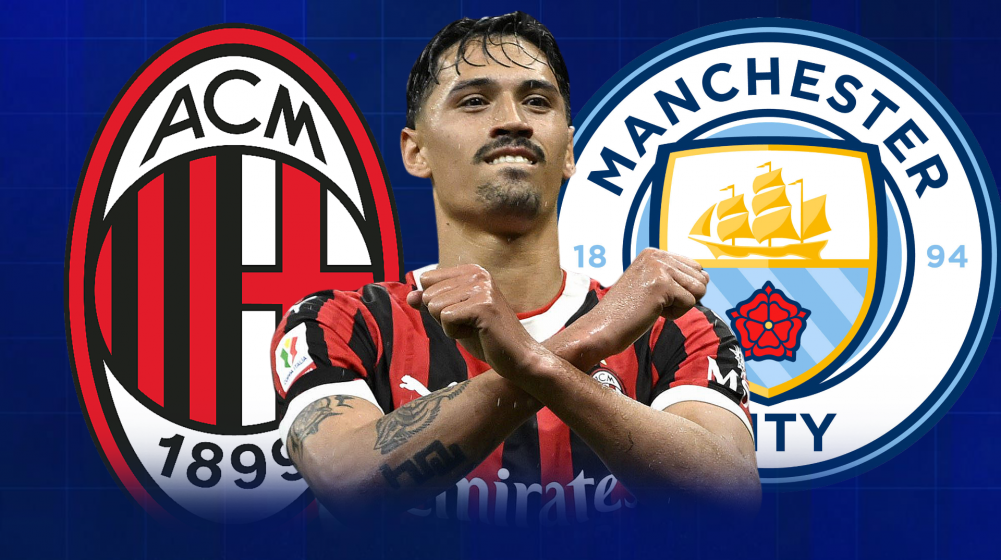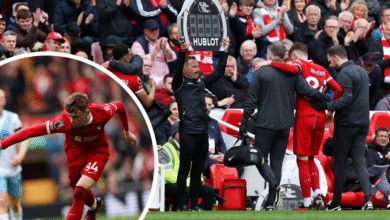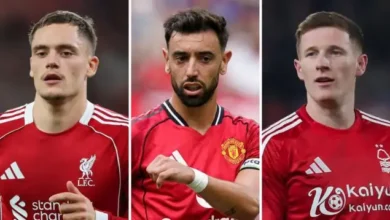Tijjani Reijnders Transfer Saga: Manchester City’s Pursuit of AC Milan’s Dutch Maestro

In the ever-evolving landscape of modern football, few stories capture the imagination quite like the meteoric rise of a player who exceeds all expectations. Tijjani Reijnders, AC Milan’s Dutch midfielder, has become precisely that kind of phenomenon. What began as a relatively under-the-radar signing has transformed into one of Serie A’s most compelling success stories, and now, inevitably, one of the summer’s most talked-about transfer sagas.
The 25-year-old Dutchman arrived at San Siro with modest fanfare, but his impact has been nothing short of extraordinary. With 15 goals and 5 assists across all competitions this season, Reijnders has not merely met expectations – he has obliterated them. His performances have been so consistently excellent that many observers now consider him among the finest midfielders in Italy’s top flight, if not the very best.
Manchester City’s Strategic Move
According to transfer specialist Fabrizio Romano, Manchester City have officially opened talks with AC Milan regarding a potential transfer for Reijnders. This development represents more than just another high-profile pursuit; it signals City’s strategic approach to squad building ahead of both the upcoming Club World Cup and the new season.
Pep Guardiola’s side are reportedly keen to conclude any deal quickly, understanding that prolonged negotiations often invite competition from other elite clubs. The timing is particularly significant, as City look to strengthen their already impressive midfield options while the player’s stock continues to rise following his exceptional campaign in Serie A.
The English champions’ interest is hardly surprising. Reijnders possesses the technical ability, tactical intelligence, and versatility that Guardiola values in his midfield players. His capacity to contribute both defensively and offensively, combined with his excellent passing range and goal-scoring threat, makes him an ideal fit for City’s demanding system.
The Financial Chess Game
The financial aspects of this potential transfer reveal the complex dynamics of modern football economics. According to Italian journalist Daniele Longo, Manchester City are prepared to offer €65 million for the Dutch international, while AC Milan have set their valuation at a minimum of €75 million. This €10 million gap might seem relatively modest in today’s inflated transfer market, but it represents significant philosophical differences between the two clubs.
For Milan, Reijnders represents not just a valuable asset but a symbol of their ability to identify and develop talent. The club invested approximately €20 million to bring him from AZ Alkmaar, meaning any sale at €75 million would represent a substantial profit. However, the Rossoneri are acutely aware that replacing a player of Reijnders’ caliber will be both expensive and challenging.
From City’s perspective, €65 million represents a reasonable investment for a player who could provide immediate impact while offering years of service. The Citizens have consistently demonstrated their willingness to pay premium prices for players who fit their system, and Reijnders’ profile suggests he could be worth every penny.
The Broader Context of Milan’s Transfer Strategy
This potential departure must be understood within the broader context of AC Milan’s recent transfer policy. The club’s American ownership, led by RedBird Capital Partners and Gerry Cardinale, has faced criticism from supporters who perceive a pattern of selling key players for financial gain rather than sporting ambition.
The parallels with Sandro Tonali’s departure to Newcastle United are particularly striking. Like Reijnders, Tonali had established himself as one of Serie A’s premier midfielders before being sold to balance the books. The Italian international’s transfer generated approximately €40 million in capital gains for Milan, but left a significant void in the team’s midfield that has never been adequately filled.
This pattern has led to growing frustration among Milan supporters, who see their club repeatedly forced to sell their best players rather than building upon success. The comments from fans reflect this sentiment, with many expressing resignation about Reijnders’ likely departure while questioning the club’s long-term strategy.
Technical Analysis: What Makes Reijnders Special
To understand why Manchester City are so eager to secure Reijnders’ services, it’s essential to examine what makes him such an exceptional player. The Dutchman operates primarily as a central midfielder but possesses the versatility to excel in various roles across the midfield spectrum.
His goal-scoring record this season – 15 goals from midfield – is particularly impressive and reflects his ability to time runs into the box perfectly. This knack for arriving in dangerous positions at precisely the right moment is a rare quality that few midfielders possess. His finishing, whether with his left foot, right foot, or head, demonstrates composure and technique that would be admirable in a striker, let alone a midfielder.
Defensively, Reijnders combines intelligent positioning with the work rate necessary to contribute to his team’s pressing system. He reads the game exceptionally well, often intercepting passes or disrupting opposition attacks before they can develop into genuine threats. His 5 assists this season also highlight his creative abilities, showing he can both score goals and create them for teammates.
Perhaps most importantly for a potential move to Manchester City, Reijnders demonstrates the kind of tactical flexibility that Guardiola demands from his players. He can operate as a traditional central midfielder, push forward into attacking areas, or drop deeper to help with ball progression – all within the same match.
The Strategic Implications for Both Clubs
For Manchester City, acquiring Reijnders would represent both immediate strengthening and long-term planning. The club’s midfield, while talented, faces potential changes with aging players and contractual situations that may need addressing. Reijnders’ age profile – 25 years old – means he could provide City with several years of peak performance.
The Club World Cup consideration adds another layer of urgency to City’s pursuit. The expanded tournament format means additional matches and increased squad rotation requirements. Having a player of Reijnders’ quality available for such fixtures could prove invaluable in City’s pursuit of multiple trophies.
For AC Milan, the decision represents a fundamental choice about the club’s direction. Selling Reijnders would provide significant financial resources but would also signal to supporters and potential signings that sporting ambition remains secondary to financial considerations. The club’s absence from European competition next season already makes attracting top-quality replacements more challenging.
The Fan Perspective: Frustration and Financial Reality
The reaction from AC Milan supporters encapsulates the broader tensions within modern football between sporting ambition and financial sustainability. Comments from fans reveal deep frustration with what many perceive as a pattern of selling their best players while retaining underperforming, highly-paid squad members.
The criticism extends beyond individual transfer decisions to encompass broader concerns about the club’s ownership model and strategic direction. Supporters point to players like Divock Origi, Yunus Musah, and Samuel Chukwueze as expensive signings who have failed to justify their cost, while simultaneously seeing proven performers like Reijnders potentially sold.
This sentiment reflects a broader challenge facing modern football clubs: balancing financial fair play requirements with supporter expectations for competitive squads. Milan’s situation is particularly complex given their recent history of financial difficulties and the need to maintain compliance with UEFA’s financial regulations.
Market Dynamics and Alternative Scenarios
The transfer market rarely operates in isolation, and Reijnders’ potential move to Manchester City could trigger a series of connected transfers. If Milan do sell their Dutch star, they will need to identify suitable replacements – a task made more difficult by their absence from European competition.
The club’s supporters have suggested various alternative strategies, including selling other players like Rafael Leão or Theo Hernández, who might command higher fees while being potentially easier to replace. However, such decisions would require careful consideration of the squad’s overall balance and the preferences of incoming head coach Paulo Fonseca.
Manchester City’s pursuit also raises questions about their own squad planning. The departure of players through natural attrition or tactical changes means new signings become necessary to maintain competitive standards across all competitions. Reijnders’ versatility makes him particularly attractive as he could fulfill multiple tactical roles.
The Ownership Question: American Models in European Football
The debate surrounding AC Milan’s ownership has taken on broader significance in discussions about American investment in European football. Critics argue that the “American model” prioritizes financial returns over sporting success, pointing to Milan’s recent transfer activity as evidence.
However, this perspective requires nuance. American ownership in football has produced both successful and unsuccessful examples. Liverpool, Arsenal, and other American-owned clubs have achieved significant success while maintaining competitive squads. The key difference appears to be in the implementation of strategy rather than the nationality of ownership.
Milan’s situation reflects specific circumstances rather than inherent flaws in American ownership models. The club’s financial position, combined with Serie A’s revenue limitations compared to the Premier League, creates constraints that affect transfer strategy regardless of ownership background.
Looking Forward: Implications for Both Clubs
Should this transfer materialize, both clubs will face significant adjustments. Manchester City would gain a player capable of immediate impact in multiple competitions, while also securing a valuable asset for future seasons. Reijnders’ ability to contribute goals from midfield could prove particularly valuable in tight matches where individual quality makes the difference.
For AC Milan, the challenge will be reinvestment. The club’s recent history suggests that selling players for significant fees doesn’t automatically translate into equivalent sporting improvement. The key will be identifying players who can not only replace Reijnders’ statistical contributions but also maintain the team’s competitive level in Serie A.
The broader implications extend beyond individual clubs to questions about competitive balance in European football. If Serie A continues to lose its best players to Premier League clubs, the league’s overall quality and global appeal may suffer, creating a self-reinforcing cycle of decline.
Conclusion: A Transfer That Defines Modern Football
The Tijjani Reijnders transfer saga encapsulates many of the defining characteristics of contemporary football. It represents the tension between sporting ambition and financial reality, the challenge of retaining talent in competitive markets, and the complex relationship between clubs and their supporters.
Regardless of the ultimate outcome, this situation will have lasting implications for both AC Milan and Manchester City. For Milan, it represents a test of their ability to balance financial sustainability with competitive ambition. For City, it offers an opportunity to strengthen their squad with a player who embodies the qualities they value most.
The coming weeks will determine whether this transfer becomes reality, but the discussions alone have already highlighted the complex dynamics that drive modern football’s transfer market. In Reijnders, both clubs see different things: Milan sees a valuable asset that could fund future development, while City sees a missing piece in their pursuit of continued success.
Whatever happens, Tijjani Reijnders has already achieved something remarkable – transforming from a relatively unknown quantity to one of Europe’s most sought-after midfielders in the space of a single season. That journey, regardless of its destination, represents everything that makes football’s human stories so compelling.














